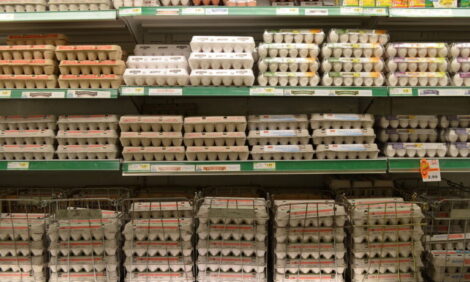



Feather Loss in Chickens
By Dan Cunningham Extension Poultry Coordinator, The University of Georgia, Cooperative Extension Service. A common complaint received from owners of backyard flocks relates to feather loss with their birds.Feathers on chickens serve very important roles in providing protection and insulation for the body. Too much feather loss makes it more likely that injuries will occur to the exposed flesh resulting in infections or bruising of the tissues. In addition, excessive feather loss can result in higher energy utilization requirements to maintain body temperature. As a result, birds with excessive feather loss often require more feed to produce the energy necessary to compensate for the heat lost from the exposed areas.
This condition can also adversely affect feed conversion and result in greater feed costs. Preventing excessive feather loss can, therefore, have an important impact on flock health and profitability. The primary reasons for excessive feather loss in small flocks are:
Inadequate Nutrition
Good feather growth and maintenance requires adequate amounts of proteins, amino acids, vitamins and minerals. It is not unusual to trace a feathering problem in a backyard flock to inadequate feeding. A well balanced poultry feed formulated for appropriate age and type of bird will assure that the flock is receiving the necessary nutrients to maintain feather growth and maintenance. Diets formulated specifically for egg production or meat production and for the appropriate age of the bird offer the best feeding programs for your flocks. Birds require different levels of protein and energy at different ages. For example, meat birds require higher levels of protein early when their growth is most rapid. Once they reach maturity, their protein needs are less to maintain body weight and feather growth. In addition, birds kept for egg production will require different levels of protein, energy and minerals compared to meat producing birds. Thus, to be sure that your birds are properly fed, it is best to purchase a poultry feed formulated for the type and age of bird kept(ie broiler starter, grower and finishing rations for meat birds and Pullet/layer diets for egg producers).
Feather Pecking and Pulling
Loss of feathers from birds can sometimes be associated with feather pecking and pulling by other members of the flock. This can also be the result of poor nutrition as inadequate intake of nutrients can trigger this type of behavior. If, however, the appropriate feed is being provided and feather loss is occurring, it may be a result of aggressive behavior by some members of the flock. Feather picking and pulling can be a learned behavior and is usually the result of one, or a few members of the flock, exhibiting this behavior. Birds are curious animals by nature and will pick at objects that attract their attention. Should their attention focus on the feathers of their flock mates and picking/pulling begin, it can become a habit that spreads to other members of the flock. Birds are also somewhat territorial and pecking/pulling of feathers can be a manifestation of this behavior. If feather loss is observed with only a few members of the flock rather than all the birds, it is likely the result of these types of behavior. Ways of determining if feather loss is a result of this type of activity is to observe the birds for a period of time and determine if certain birds in the flock are being overly aggressive with their flock mates or have developed feather pulling behavior. If so, the best remedy is to remove the bird(s) instigating the problem from the rest of the flock. A few weeks in isolation may reduce the expression of this behavior. If not, the remedy for this problem may require permanent removal from the flock. For flocks of birds where picking and pulling are chronic problems, beak trimming at an early age may be necessary. Beak trimming may be done at about six weeks of age by removing about 3/16 in. from the tip of the upper beak. This can be done using a toe nail clipper, but care must be taken not to injure the tongue of the bird.
Molting
Molting is a natural process whereby laying birds will cease egg production and lose feathers from their neck, breast and back areas for a few weeks to a few months. Molting occurs most often in natural environments where the birds are exposed to natural day lengths. Decreasing length of day light in the fall will trigger the onset of molt. It is natures way of providing laying birds a rest period prior to the stimulus for maximum reproductive performance in the spring. Molting is eliminated in commercial flocks by providing long day lengths using artificial lights for approximately 14 hours every day. Many backyard flocks are kept under natural day light fluctuations and thus molting can be a common cause of feather loss.
If the feather loss occurs in the fall or winter and only lasts for a few months before new feathers are observed, it is likely your birds have gone through a natural molt. Molting is not something to be concerned about unless you want your birds to continue laying in the fall and winter.
Disease and Stress
Unhealthy birds or birds that are under stressful conditions may also exhibit feather loss. Using best management practices and observing your birds for possible disease conditions can be important for your flock. Stressful conditions such as heat, cold, disease, and lack of adequate amounts of feed and water can result in feather loss and poor feather quality with your birds. Good management is always important, and feather loss maybe an indicator needed improvements in management. It is important for your birds to have good quality feathering. Providing good management programs, adequate feed and water and minimizing stressful conditions in your flocks will help assure strong feathers and a heathy flock.
More help from ThePoultrySite Forum
Feather Loss
Chicken losing feathers
February 2008








